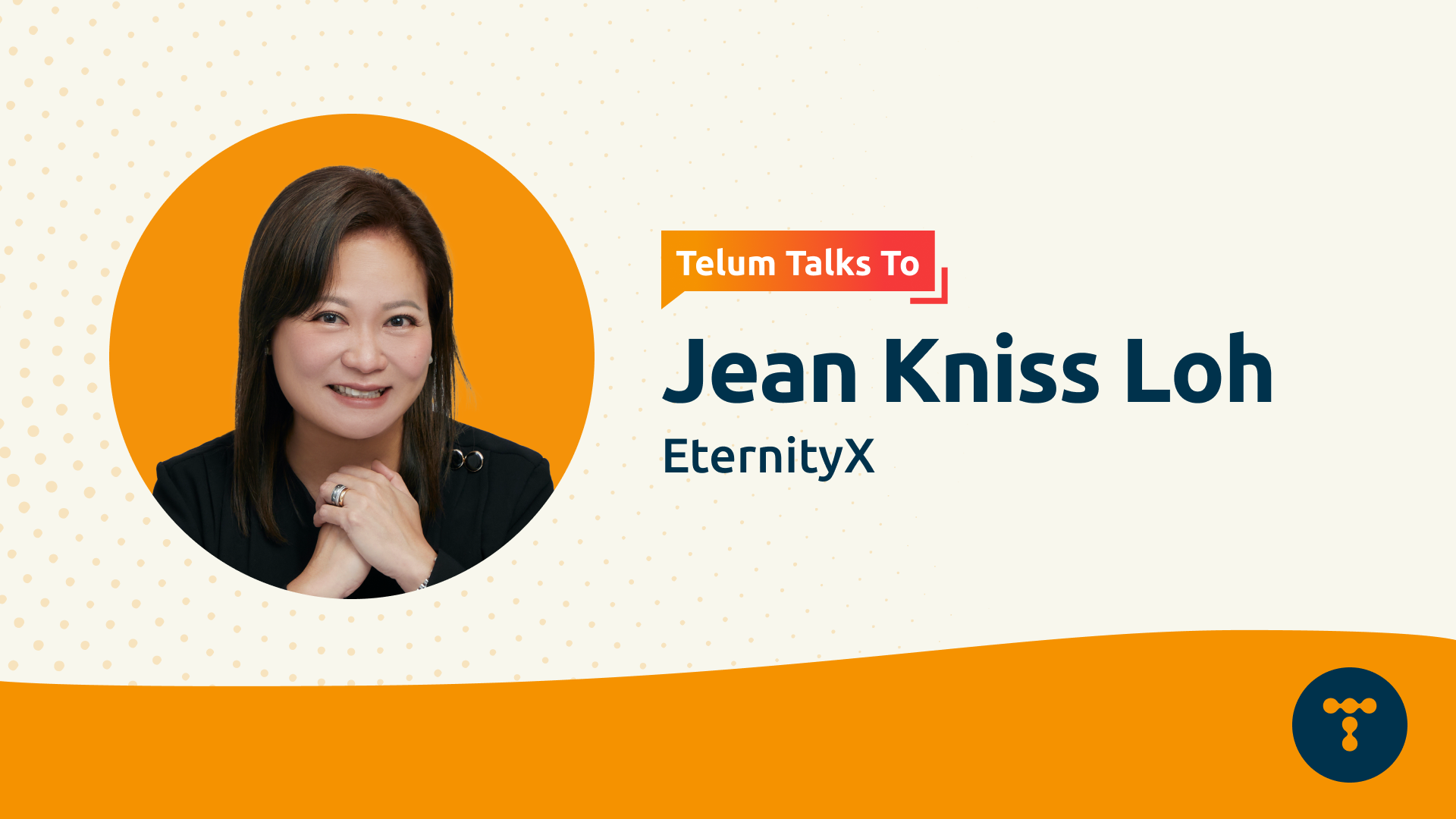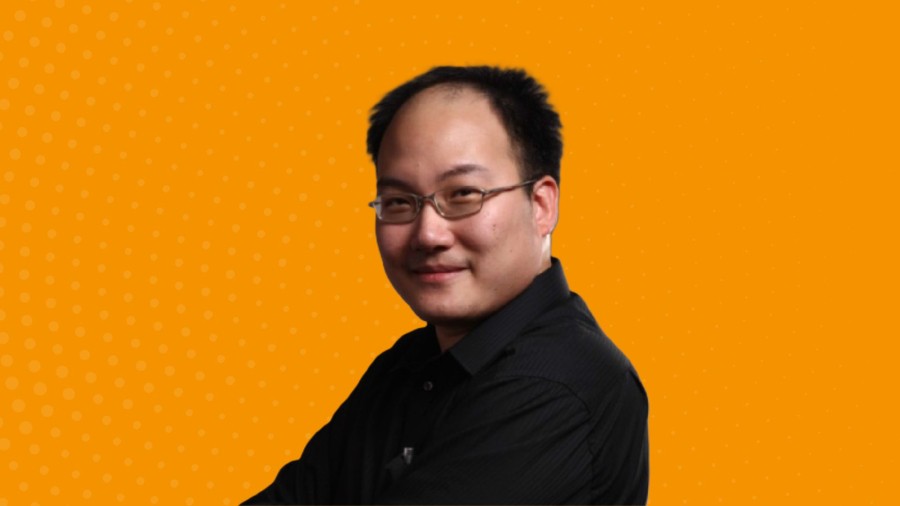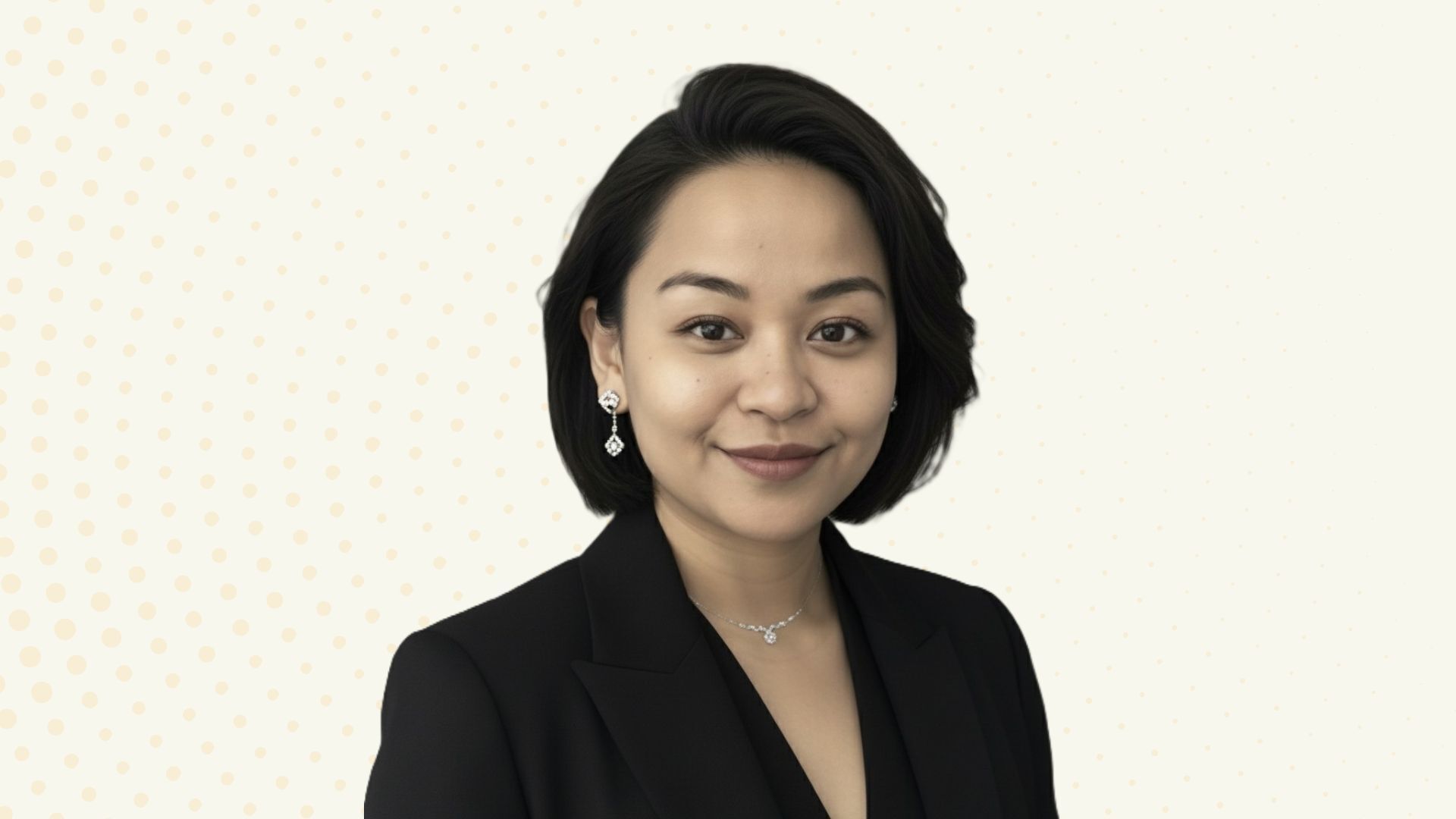Consumer behaviour has evolved significantly over the years, prompting a shift in marketing from simple selling to compelling storytelling, and from siloed functions to fully integrated marketing and communications. This transformation is especially critical when navigating the complexities of the Greater China market, where cultural nuance and digital fluency are key to brand success. Telum Media spoke with Jean Kniss Loh, Global Chief Marketing Officer at EternityX, to explore the rise of integrated marcomms and her strategic playbook for brands entering Greater China.
EternityX as an adtech marketing firm, is expanding its services to offer integrated marcomms solutions, including public relations. What's driving this shift, and how will it help brands build stronger connections with consumers and stakeholders?
Marketing has changed across all markets globally. In the past, advertising and PR were separate entities. But now, marketing is very different. Consumers today, are not simply purchasing products or services, but they are buying into stories, values, personalities and communities that resonate with them. And marketing has become more about shaping perceptions, building trust and creating long-term influence amongst target audiences. This shift is happening across the region and globally, resulting in brands leaning into credibility and community-building aspects of marketing.
I think that's the reason why EternityX is evolving. With the introduction of our new product, NaviX, we take all our AI-powered audience intelligence and integrate it with strategic PR tools to help brands not just reach their audience, but to engage with them in a way that is consistent, meaningful and measurable.
For international and Southeast Asian brands looking to enter the Chinese market, what are the key elements or cultural nuances that brands should keep in mind in their cross-border marketing strategy?
The Greater China market is vast, diverse and operates with its own distinct logic when it comes to consumer communications and behaviours. Success here is not just about localisation - it’s about deep cultural integration.
One of the most critical elements to understand is that social commerce reigns supreme. Chinese consumers are highly active on platforms like Douyin (TikTok China), Xiaohongshu (RED), iQiyi, and Tencent Video, where they consume a dynamic mix of content - from short-form videos and real-time reviews to influencer recommendations and mini-dramas. These platforms are no longer just channels; they are ecosystems where consumers discover, engage and transact. For brands, this means being present where the action is and tailoring content to platform behaviours.
Authenticity is also key. The era of superficial localisation - using traditional symbols or simply featuring Asian faces - is long gone. Today’s Chinese consumers, especially Gen Z, are highly discerning. They seek real cultural relevance and expect brands to speak their language not just literally, but emotionally and socially. This calls for a deeper understanding of what drives your target segments - from traditional values like family and harmony during Lunar New Year, to modern aspirations like self-expression and convenience.
For example, a campaign targeting younger consumers might highlight how a product fits seamlessly into their fast-paced urban lifestyles, while another aimed at families during the festive seasons could focus on emotional storytelling that reflects shared traditions and togetherness.
At EternityX, we’ve met many marketers and global brands who face the same challenge: how to connect with Chinese audiences authentically and effectively. That’s why we created the
EternityX Global Knowledge Hub - a first-of-its-kind, always-on strategic content and intelligence platform designed to help brands navigate China’s cultural, behavioural and digital landscape with confidence.
Social media platforms like WeChat and RED are integral to marketing in the Greater China market. How can brands leverage these platforms to build long-term loyalty with Chinese consumers and foster deeper connections with their audience?
Let’s be real about this. If brands are not meeting consumers where they already are, then we are missing out on opportunities to build consumer loyalty. In fact, one of the whitepapers that we have done, titled “Mainland Chinese Expats in Hong Kong: Unlocking Growth Opportunities and Market Dynamics”, reveals that culturally relevant marketing strategies on familiar digital platforms enhance brand recognition and fosters loyalty as consumers see brands speaking their language and understand their needs.
Take WeChat, I would call it China's CRM powerhouse, akin to a digital VIP lounge. The social media platform allows brands to create mini programs and set up exclusive member clubs reaching out to a particular segment of the audience and even have loyalty programs tied into the platform. On the other hand, RED or Xiaohongshu, is like a gold mine for user-generated content. As Chinese consumers seek peer recommendations, this is the platform where they check out reviews. Brands could leverage this platform to cultivate a consumer community through content that focusses on brand value and how they could fulfil the lifestyle that their targeted consumers aspire to have.
In the end, the thing about loyalty in this market is not really just about repeat purchases. It's about getting into the community that you know your consumers are in, building that trust and, most importantly, creating that sense of exclusivity that they seek.
Drawing on your two decades of career experience in Singapore and Hong Kong, what key strengths have you observed from these two regions, and how can they learn from each other to enhance their communication strategies?
That's a fun question. As a Singaporean who has spent a significant part of my adult life in Hong Kong, I often get asked this. On the surface, Singapore and Hong Kong might appear quite similar, but when it comes to communication operations, they are quite distinct.
Singapore is what you would call “the strategist”. Their communications tend to be very structured and government-driven. Brands here focus heavily on long-term reputation management, corporate trust and regulatory compliance. Singapore is forward-thinking, especially in areas like AI and sustainability, which the government actively promotes, and brands would respond to these shifts. On the other hand, Hong Kong thrives on agility and speed. The media landscape is much more saturated, with numerous media outlets, which makes real-time engagement a crucial part of their communications strategy. Hong Kong is also known for its crisis management capabilities and bolder messaging and storytelling from brands.
Personally, I learnt that Singapore can take a page from Hong Kong's agility. While waiting for the perfect execution to happen, you might actually miss some of the real-time opportunities. For Hong Kong, I think that it could benefit from perhaps a more structured approach from Singapore towards building long-term brand trust as well as in the area of sustainability-driven communications.
Nevertheless, I think there won't be the best of both worlds. We, as marketers, are always evolving and drawing lessons from each other.
What is your biggest takeaway from your PR career?
I started at the time of PR where you don't have email. We typed our press releases and sent them out via fax, so that's what a “dinosaur” I am. But there's one thing that I have learnt is that the age of one-way messaging has passed, it has passed us a long time now.
And whether you are a consumer or a brand reaching out to an audience, you have to keep in mind that people are not just buying into a product, service or an idea. They want to buy into a trend; they want to be a part of what's going on.
So I think it's about always evolving with the trend and evolving with what customers need.

Feature
Telum Talks To: Jean Kniss Loh from EternityX
by Telum Media
12 May 2025 4:00 PM
7 mins read
Telum Media creating connections
Get in touch to learn more
Previous story
Telum Vox Pop: Mother's Day 2025
You might also enjoy
Moves
Eric Lim has been elevated to Head of Marketing Strategy & Communications at Blueshark, a partner of PETRONAS Group in green mobility. Based in Malaysia, he spearheads brand communications, public relations, content creation, collaborations, and marketing for the electromobility company and its sub-brand, SoloEra.
Eric has accumulated more than 25 years of communications, marketing, and related experience across the automotive, technology, and property development sectors, and was most recently Senior Manager of Brand and Communications at Blueshark.
25 November 2025 6:26 AM
1 min read
Moves
Anggini Setiawan has stepped into the role of Head of Communications for Southeast Asia at TikTok. Based in Jakarta, she oversees the social media brand's overall communications activities and reputation across the region.
Anggini brings more than a decade of comms experience across agency and in-house roles at Beyond Communication, Ruangguru, and ByteDance.
25 November 2025 3:26 AM
1 min read
Feature
Over the past few years, mentions of AI within the industry haven't toned down - if anything, they've been ramping up. Looking back at Telum's 2024 Year Ahead and PR Tech in 2025 pieces, it's interesting to see how attitudes have shifted. What began as a period of experimentation - playing with prompts, dabbling in ideation, and speculating about job replacement - has solidified into a structural transformation within the profession.
AI has moved from a nice-to-have to a non-negotiable; from a fringe tool to a core strategic capability. 2025 is the year PR and comms practitioners stopped asking, “What can AI do?” and began asking, "How do we lead with it?”.
Integration of AI tools in the industry
Early adoption of AI centred around basic prompting and inspiration. In 2025, however, practitioners in the PR and comms space have unlocked more of its capabilities.
We saw many organisations develop their own AI offerings across APAC and the Middle East, ranging from AI visibility services and training tools to crisis solutions. These include PIABO GEO, Ogilvy ANZ’s Generative Impact, Golin’s First Answer, TEAM LEWIS' Training for Trust, and FINN Partners' CANARY FOR CRISIS.
The narrative around job replacement has also softened. Rather than replacing humans, the industry is now embracing AI as an enhancer.
As Natacha Clarac, Director General of Athenora Consulting in Brussels and former President of PRGN, said following PRGN's launch of Précis Public Relations: "The introduction of Précis Public Relations showcases the potential of AI to enhance rather than replace the strategic value PR professionals offer."
GEO / LEO and search transformation
One trend that we have seen in 2025 was the decline of traditional search behaviour. AI assistants, such as ChatGPT, Gemini, and Perplexity, increasingly replaced clicks with instant answers.
As Nichole Provatas, Executive Vice President and APAC Head of Integrated Marketing and Innovation at WE Communications, noted: "Around 69 per cent of Google news searches now end in zero clicks as AI Overviews rise."
This reality raises the stakes for inclusion in AI answers, as Rob van Alphen, Managing Director of Polaris Digital, warned: “…if your brand or leadership isn’t part of the AI answer, you’re invisible.”
Jack Barbour, EVP and AI Lead at Golin New York, and Nichole both highlighted how earned media is key in making brands discoverable, with at least 90 per cent of AI search results coming from earned citations. Brian Buchwald, Edelman’s President, Global Transformation and Performance, emphasised the same point: "You can't buy your way to the top of an AI-generated answer...brands must proactively shape how they appear in LLM outputs or risk being misrepresented, misunderstood, or missed entirely."
AI platforms are relying on reputable journalism, corporate blogs, and expert commentaries - flipping the paid-dominated marketing playbook on its head.
This shift fuelled the rise of GEO (Generative Engine Optimisation) and LEO (Language Engine Optimisation). In April, Celia Harding launched what she described as the world’s first LEO advisory firm, arguing: "While other agencies are looking at how AI can drive efficiencies in creativity and client service, they are all overlooking the real opportunity that lies ahead - shaping the data LLMs learn from."
If SEO defined the 2010s, GEO and LEO are shaping 2025 and beyond, with earned media at the core.
AI upskilling
As AI adoption surged throughout the year, professional development opportunities expanded rapidly, ranging from hands-on workshops and panel discussions to large-scale conferences.
These events spanned the region, including the Generative AI Bootcamp series by PRCA APAC and Sequencr AI, PRCA Thailand's first-ever conference in Bangkok on AI and communications, and Jakarta's “Shape the Future of Your Communications Strategy with AI” workshop hosted by ACE, APPRI and Reputasia Strategic Communications.
Telum Media also hosted its own list of AI-focused events, including workshops with Shaun Davies in Sydney and Melbourne, a workshop with Rob Van Alphen in Singapore, a global webinar with Matt Collette, collaborations with the Kennedy Foundation for panels on AI and journalism in Australia, and joint sessions with SOPA on ethical AI use in publishing in Singapore and Hong Kong.
The scale of these events showed one thing - these sessions were no longer “optional extras”, they've become essential for teams wanting to keep pace with AI's evolution across the industry.
Human and ethical considerations
As AI adoption rose, so did the reminders that human oversight remains essential. Practitioners repeatedly stressed that AI cannot replace human judgement, empathy, or lived experience.
As Matt Cram, Head of Media and Communications at Orygen, put it: "AI can’t replace the way people connect through empathy, creativity, and lived experiences."
Rob van Alphen reinforced this: "…we must double down on our inherently human strengths, such as empathy, curiosity, ethical decision-making, and critical thinking."
And Zeno’s Head of Regional Business Development, Asia, Ekta Thomas, said: "People connect with people - not algorithms."
These sentiments were reinforced across industry events focused on responsible AI use. At the Jakarta workshop, Reputasia Co-Founder and Communications Strategist, Fardila Astari, emphasised the importance of ethical guidelines for AI use, noting that careless application can create reputational risks, as seen in cases where major companies faced credibility issues due to AI-generated inaccuracies.
Similar points were made at Telum Media and SOPA's sessions in Singapore and Hong Kong, where newsroom leaders stressed the importance of maintaining editorial oversight, transparent disclosure, and strong governance structures. The consensus is that while AI may accelerate workflows, humans safeguard credibility.
2026 and beyond
As we approach the new year, AI is shifting from experimental to foundational. Nichole Provatas urges teams to "publish for AI inclusion," treating owned channels as structured, plain-language reference hubs built for machine ingestion.
But the landscape is still evolving, as Matt Cram cautions: "AI doesn’t just surface information, it consumes it…and the best strategies today might look very different tomorrow." For communicators, adaptability becomes the differentiator.
Ultimately, the future isn't AI-led but AI-enabled. As Matt Collette notes, "Human + AI is the new paradigm." Success will come from pairing AI's scale and precision with the empathy, judgement, and contextual understanding only humans can bring.
25 November 2025 2:01 AM
6 mins read


